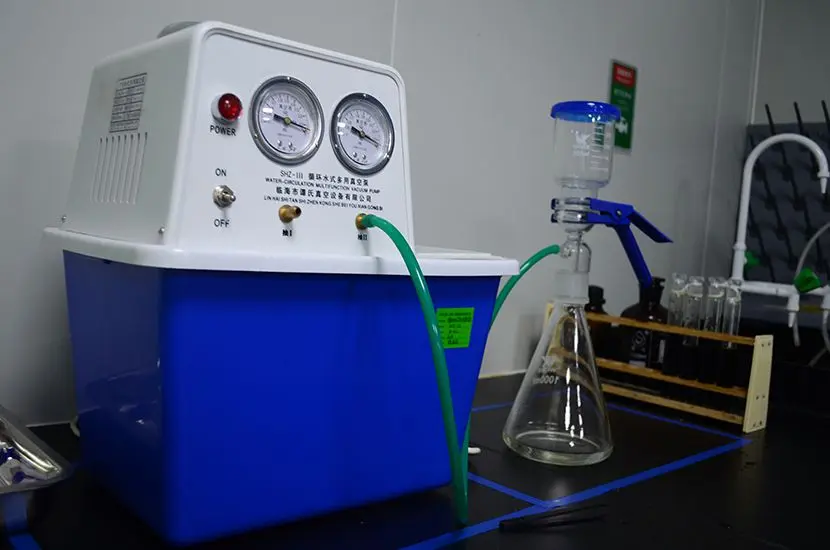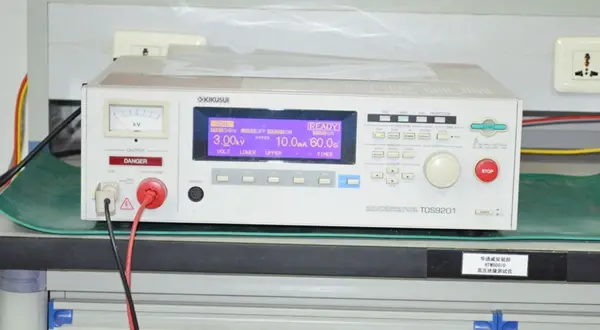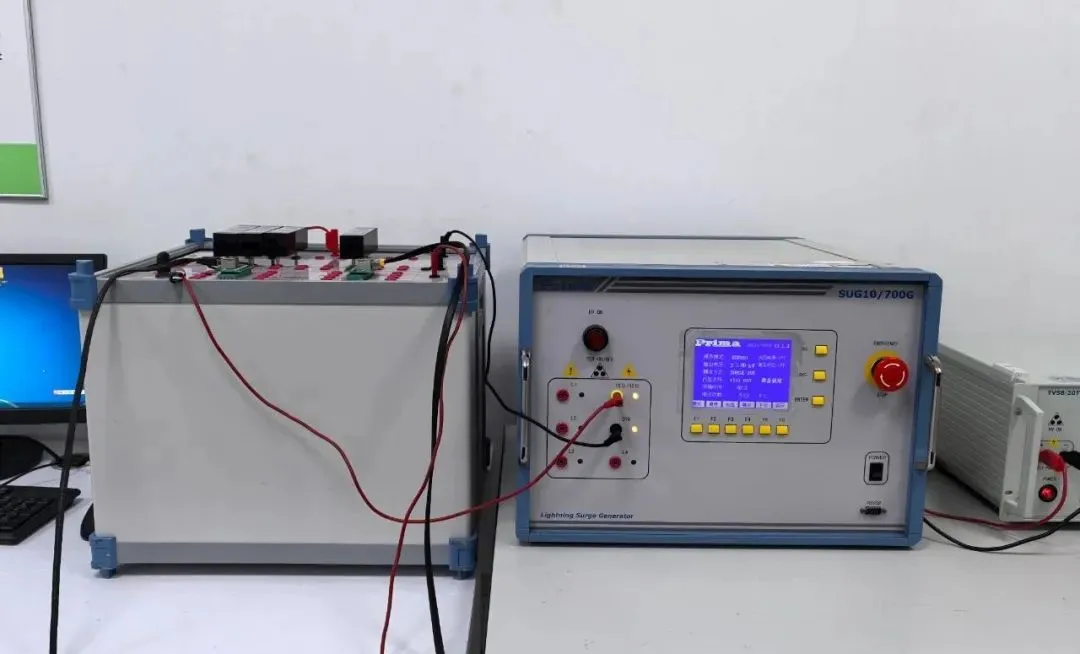
How to Get RoHS Compliance?
What is RoHS?
ROHS, the fULl name of "Restriction of Hazardous Substances Directive", is an important environmental protection regulation formulated by the European Union. The latest ROHS certification directive is Directive 2015/863/EU, also known as RoHS 3.0 Directive. This directive aims to restrict the use of specific hazardous substances in electrical and electronic equipment to REDuce the adverse impacts of these substances on the environment and human health.

1.1 Purpose of RoHS Certification
The main purpose of RoHS is to urge enterprises to adopt more environmentally friendly materials and production processes, and reduce the potential hazards of electronic products to the environment and human body. By restricting the use of specific hazardous substances, the directive promotes sustainable development and the improvement of environmental awareness in the manufacturing field of electrical and electronic equipment.
The following is an overview of RoHS:
· 1.2 Restriction of Hazardous Substances: The RoHS directive restricts the use of specific hazardous substances in electrical and electronic equipment, including but not limited to lead, mercury, cadmium, hexavalent chromium, polybrominated biphenyls (PBB), polybrominated diphenyl ethers (PBDE), and certain phthalates.
· 1.3 Environmental Protection: RoHS certification aims to reduce the emission of hazardous substances from electrical and electronic equipment and minimize the negative environmental impacts during their use and disposal. By limiting the use of hazardous substances, RoHS helps reduce pollution in soil, water sources, and the atmosphere.
· 1.4 Human Health: By reducing hazardous substances in electrical and electronic equipment, RoHS certification intends to lower the risk of human exposure to these substances when using the equipment. This helps protect workers involved in production, use, and disposal of the equipment, as well as consumers and personnel handling waste equipment.
· 1.5 Resource Recycling: The reduction of hazardous substances contributes to improving the recyclability of electrical and electronic equipment and promoting resource recycling. This is in line with the principles of sustainable development, helping reduce the demand for new raw materials and the environmental burden of waste equipment.
· 1.6 Compliance with EU Regulations: According to the RoHS directive, EU member states are obligated to implement this directive in their national laws and enforce rohs certification requirements for electrical and electronic equipment sold within their territories. Therefore, obtaining RoHS certification is a compliance with EU regulations for electrical and electronic products intended for sale in the European market.
RoHS Certification Standards and Requirements
2.1 Restricted Hazardous Substances
RoHS certification mainly focuses on restricting the use of the following substances, with a maximum allowable concentration of usually 0.1% (except for lead):
① Lead (Pb)
② Mercury (Hg)
③ Cadmium (Cd)
④ Hexavalent chromium (Cr VI)
⑤ Polybrominated biphenyls (PBB)
⑥ Polybrominated diphenyl ethers (PBDE)
⑦ Di(2-ethylhexyl) phthalate (DEHP)
⑧ Butyl benzyl phthalate (BBP)
⑨ Dibutyl phthalate (DBP)
⑩ Diisobutyl phthalate (DIBP)
2.2 Units of Measurement
The concentration of restricted substances is generally expressed in parts per million (ppm) or milligrams per kilogram (mg/kg).
2.3 Scope of Application
RoHS certification applies to various electrical and electronic equipment, including large household appliances, small household appliances, IT and telecommunications equipment, consumer equipment, lighting equipment, electrical and electronic tools, toys, medical devices, monitoring and control tools, automatic dispensers, seMIConductor devices, etc.
2.4 Exemption Conditions
The RoHS directive includes certain exemption conditions, such as specific application fields, safety, substitutability, etc. The following are some common exemption conditions:
· 2.4.1 Specific Application Fields: Certain specific application fields of electrical and electronic equipment may require the use of substances restricted by RoHS. This may be because the performance or availability of alternative substances in these fields is insufficient to meet specific requirements.
· 2.4.2 Safety: Exemptions may be granted if restricting certain substances poses a threat to product safety. This usually involves ensuring the normal operation of the product and the safety of users.
· 2.4.3 Substitutability: If no suitable alternatives are available technically and commercially, certain substances may be exempted. This is because in some cases, the research and development and commercial application of alternatives may require more time.
· 2.4.4 Other Technical Restrictions: If certain restricted substances are difficult to replace under the current technical level, exemption conditions may apply.
Why Are These Substances Restricted?
These substances are restricted mainly due to environmental protection and human health considerations. The main reasons for restricting each substance are as follows:
· 3.1 Lead (Pb): Lead is harmful to human health, especially to children and infants. It can affect the nervous system, brain development, and even cause poisoning at high concentrations. In addition, the accumulation of lead in the environment is also harmful to ecosystems.
· 3.2 Mercury (Hg): Mercury is a toxic metal that is harmful to the nervous system and kidneys. In the environment, mercury can be converted into organic mercury, enter the food chain, and pose potential threats to aquatic organisms and the food supply chain.
· 3.3 Cadmium (Cd): Cadmium is harmful to the kidneys and bones, and is an element sensitive to plant growth. In the environment, it can accumulate in soil and water, causing negative impacts on ecosystems.
· 3.4 Hexavalent Chromium (Cr VI): Hexavalent chromium is a carcinogen, and long-term exposure may lead to lung cancer. In addition, hexavalent chromium is irritating to the skin and may cause allergic reactions.
· 3.5 Polybrominated Biphenyls (PBB) and Polybrominated Diphenyl Ethers (PBDE): PBB and PBDE are brominated flame retardants that are difficult to degrade in the environment and may accumulate in organisms. Both substances have potential harmful effects on humans and the environment.
· 3.6 Di(2-ethylhexyl) phthalate (DEHP), Butyl benzyl phthalate (BBP), Dibutyl phthalate (DBP), Diisobutyl phthalate (DIBP) (referred to as Phthalates 4P): These phthalate substances are plasticizers that may have adverse effects on the reproductive system and endocrine system. DEHP is also considered a carcinogen.
RoHS Certification Testing Methods and Equipment
· 4.1 ICP-OES: Inductively Coupled Plasma Optical Emission Spectrometry is the most commonly used method in ROHS Testing, mainly for detecting metal elements such as lead, chromium, and cadmium. Its principle is to atomize the sample solution to generate plasma, and perform qualitative and quantitative analysis through the characteristic emission spectra of elements.
· 4.2 ICP-MS: Inductively Coupled Plasma Mass Spectrometry is also an important method for rohs testing, used to detect metal elements such as cadmium and mercury. Its principle is to atomize the sample to generate plasma, then use a mass analyzer to separate various ions for qualitative and quantitative analysis. ICP-MS has higher sensitivity and can achieve the detection of trace and ultra-trace elements.
· 4.3 GC-MS: Gas Chromatography-Mass Spectrometry is mainly used to detect brominated flame retardants such as PBDE and PBBs. Its principle is to separate the components of the sample by gas chromatography, then use mass spectrometry for identification and quantitative analysis. GC-MS is an important means for RoHS testing of brominated flame retardants.
· 4.4 UV-Vis Spectrophotometer: Used for the content determination of substances where there is a quantitative correspondence between solution color and concentration, such as the detection of hexavalent chromium. Its principle is to perform quantitative analysis based on the light absorbance of different compounds at specific wavelengths.
· 4.5 Evaporation Gravimetry: Used for the rapid qualitative and quantitative analysis of PBBs and PBDEs in certain polymer materials. Its principle is to use a certain solvent elution method combined with gas chromatography for detection.
· 4.6 In addition to the above mainstream methods: X-ray Fluorescence Spectrometry and Liquid Chromatography are also used in certain cases. Being familiar with RoHS testing methods is a good reference for judging the RoHS testing capabilities of third-party institutions.
RoHS Certification-Related Standards
· 5.1 EU RoHS Directive 2015/863/EU: This is the core regulation for RoHS certification, specifying the limit requirements for 10 hazardous substances. These hazardous substances include lead (Pb), mercury (Hg), cadmium (Cd), hexavalent chromium (Cr VI), polybrominated biphenyls (PBB), polybrominated diphenyl ethers (PBDE), di(2-ethylhexyl) phthalate (DEHP), butyl benzyl phthalate (BBP), dibutyl phthalate (DBP), and diisobutyl phthalate (DIBP).
· 5.2 IEC 62321:2008 - Determination of Hazardous Substances in Electrical and Electronic Products: This is an important technical reference standard for RoHS testing, specifying sampling and testing methods for different hazardous substances. The standard provides specific steps and requirements for measuring these substances.
· 5.3 EN 50581:2012 - Conformity Assessment for the Restriction of Hazardous Substances in Electrical and Electronic Products: This is an important basis document for judging whether a product complies with the RoHS directive. It involves evaluating and verifying whether the product meets the relevant requirements of the RoHS directive.
· 5.4 IPC-1752A: This standard specifies the marking requirements for RoHS-certified products, including the position, size of the RoHS mark on the product, and the content of component marking. This helps consumers and relevant stakeholders confirm the compliance of the product.
· 5.5 RoHS certification adopts the principle of modular and classified certification: Modules or components of electronic products require RoHS certification.
These standards together form the RoHS certification system, ensuring that electrical and electronic products meet environmental protection, health, and safety requirements during manufacturing and sales. When conducting RoHS certification, enterprises need to follow the specific provisions of these standards to ensure product compliance.
Documents Required for RoHS Certification Application
① 6.1 Product List: List the basic information such as model, name, and purpose of all products to be certified.
② 6.2 Technical Documents: Include product technical specifications, design drawings, manufacturing processes, process documents, and other information to facilitate testers' evaluation of the product.
③ 6.3 Product Samples: Provide product samples that meet the requirements for testing to verify whether the product contains RoHS-prohibited substances.
RoHS Certification Application Process
① Select a certification body and understand information such as the certification process, standard requirements, and certification fees.
② Submit an application: Submit a RoHS certification application, relevant documents, and pay the certification fee.
③ Document review: Our laboratory reviews the application documents and determines requirements such as the test plan and sample quantity.
④ Product testing: Submit product samples to the laboratory for testing, which includes multiple items such as the content detection of RoHS-prohibited substances.
⑤ Certification evaluation: Evaluate the test results to determine whether the product meets the requirements of RoHS certification and issue a certification report.
⑥ Certification certificate: If the product passes the certification evaluation, a RoHS certification certificate will be issued.
RoHS Certification Processing Cycle
The processing cycle of RoHS certification ranges from 1 week to 3 weeks.
RoHS Certification Fees
RoHS fees are divided into two parts:
① Fee by material: One material costs approximately 80 US dollars. For multiple materials, the laboratory will offer a package price.
② RoHS integration fee: Integration means integrating suppliers' rohs test reports into a single RoHS integration certification. The fee is generally around 700 US dollars.
Validity Period of RoHS Certification Certificate
RoHS certification itself does not specify a specific validity period for the certification certificate. However, certification bodies may stipulate a validity period when issuing RoHS certification certificates. This validity period may be affected by the certification body's internal regulations, national laws and regulations, or certification standards. Therefore, the validity period of the RoHS certification certificate is specifically specified by the certification body when issuing the certificate.
Email:hello@jjrlab.com
Write your message here and send it to us
 Does RoHS Apply to Packaging?
Does RoHS Apply to Packaging?
 How to Get RoHS Compliance?
How to Get RoHS Compliance?
 How to get EN 62368-1 Test Report
How to get EN 62368-1 Test Report
 EN 300 328 Bluetooth Test Report
EN 300 328 Bluetooth Test Report
 How to get the EN 300328 Test Report?
How to get the EN 300328 Test Report?
 In-depth Interpretation of SAA Certification Q&
In-depth Interpretation of SAA Certification Q&
 Differences Between EN71 and CPC for Children's To
Differences Between EN71 and CPC for Children's To
 IP56/IP67/IP68 Waterproof and Dustproof Rating Tes
IP56/IP67/IP68 Waterproof and Dustproof Rating Tes
Leave us a message
24-hour online customer service at any time to respond, so that you worry!




